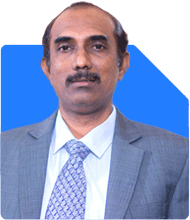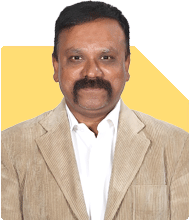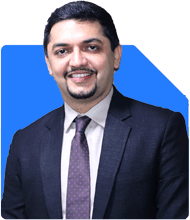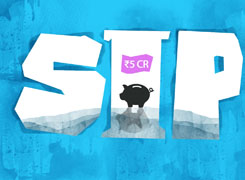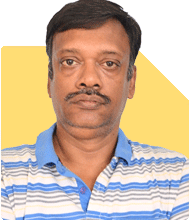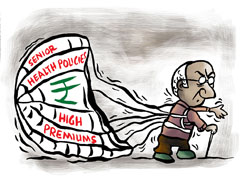Ramalingam Kalirajan |10872 Answers |Ask -Follow
Mutual Funds, Financial Planning Expert - Answered on May 18, 2024
He has an MBA in finance from the University of Madras and is a certified financial planner.
He is the director and chief financial planner at Holistic Investment, a Chennai-based firm that offers financial planning and wealth management advice.... more

Hi, I am 47 years old. I have a corpus of about 3.4Cr of which about 1.5Cr is in equities(Mostly large cap) & ETFs and rest is FD and PF. Apart from this, I have about Rs 72000 rental income. I have a term insurance and family medical insurance. I need to work for atleast another 3 years to cover my elder son's education and need a corpus for my 14 yrs old daughter's education of say about 50L. I can invest around 2L per month in SIPs. Given all this, how much more retirement corpus I need to have a regular monthly income of 2L? Thanks for replying.
Current Financial Status
Corpus Allocation
Your corpus of ?3.4 crore, with a significant portion in equities, FDs, and PF, reflects a diversified investment approach.
Additional Income
The rental income of ?72,000 per annum provides an additional source of cash flow, contributing to your overall financial stability.
Future Financial Goals
Education Expenses
You have identified the need for ?50 lakh for your daughter's education in 14 years and have committed to investing ?2 lakh per month in SIPs to achieve this goal.
Retirement Planning
To secure a regular monthly income of ?2 lakh post-retirement, we need to calculate the additional retirement corpus required.
Retirement Corpus Calculation
Desired Monthly Income
A monthly income of ?2 lakh translates to an annual income of ?24 lakh post-retirement.
Withdrawal Rate
Assuming a conservative withdrawal rate of 5-6% from the retirement corpus, we can estimate the required corpus as follows:
?24,00,000 / 0.05 = ?4.8 crore
?24,00,000 / 0.06 = ?4 crore
Gap Analysis
Current Retirement Corpus
Your current corpus of ?3.4 crore is significant but falls short of the required retirement corpus.
Additional Savings
To bridge the gap, you may consider increasing your monthly SIP contributions or exploring other investment avenues that offer potential for higher returns.
Asset Allocation
Review your asset allocation to ensure it aligns with your risk tolerance and investment goals, especially considering the need for regular income post-retirement.
Conclusion
While you have made commendable progress towards your financial goals, there is a need to augment your retirement corpus to secure a regular monthly income of ?2 lakh post-retirement. By reassessing your investment strategy, increasing your savings rate, and exploring suitable investment options, you can work towards achieving financial independence and ensuring a comfortable retirement.
If you require further assistance or personalized advice, feel free to reach out. I'm here to support you in navigating your financial journey and achieving your objectives.
Best Regards,
K. Ramalingam, MBA, CFP,
Chief Financial Planner,
www.holisticinvestment.in
You may like to see similar questions and answers below
Ramalingam Kalirajan |10872 Answers |Ask -Follow
Mutual Funds, Financial Planning Expert - Answered on Oct 26, 2024
Naveenn Kummar |233 Answers |Ask -Follow
Financial Planner, MF, Insurance Expert - Answered on Sep 11, 2025
Ramalingam Kalirajan |10872 Answers |Ask -Follow
Mutual Funds, Financial Planning Expert - Answered on Sep 08, 2025
Radheshyam Zanwar |6735 Answers |Ask -Follow
MHT-CET, IIT-JEE, NEET-UG Expert - Answered on Dec 06, 2025
Dr Nagarajan J S K |2576 Answers |Ask -Follow
NEET, Medical, Pharmacy Careers - Answered on Dec 06, 2025
Mihir Tanna |1090 Answers |Ask -Follow
Tax Expert - Answered on Dec 06, 2025
Ramalingam Kalirajan |10872 Answers |Ask -Follow
Mutual Funds, Financial Planning Expert - Answered on Dec 06, 2025
Radheshyam Zanwar |6735 Answers |Ask -Follow
MHT-CET, IIT-JEE, NEET-UG Expert - Answered on Dec 06, 2025
Radheshyam Zanwar |6735 Answers |Ask -Follow
MHT-CET, IIT-JEE, NEET-UG Expert - Answered on Dec 06, 2025
Radheshyam Zanwar |6735 Answers |Ask -Follow
MHT-CET, IIT-JEE, NEET-UG Expert - Answered on Dec 06, 2025
Dr Dipankar Dutta |1837 Answers |Ask -Follow
Tech Careers and Skill Development Expert - Answered on Dec 05, 2025
Dr Shyam Jamalabad |108 Answers |Ask -Follow
Dentist - Answered on Dec 05, 2025
Dr Shyam Jamalabad |108 Answers |Ask -Follow
Dentist - Answered on Dec 05, 2025





